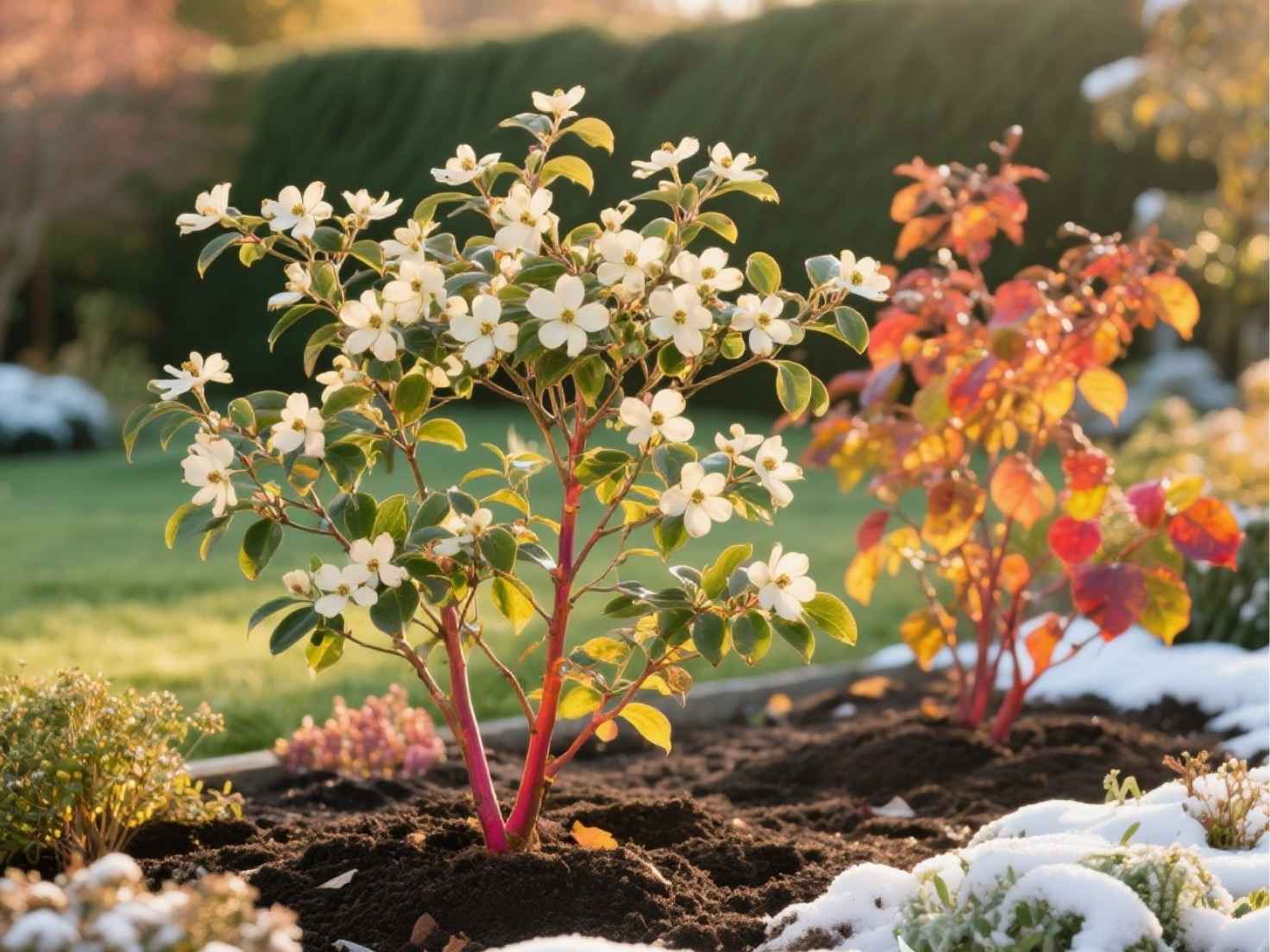An excellent Dogwood shrub brings the classic beauty of dogwood trees in a smaller, more manageable form, making it an excellent choice for nearly any yard. They fit well in small gardens or mixed borders and can brighten up your winter landscape. Some types are known for their colourful stems in winter, while others offer beautiful flowers and bold fall leaves.
This guide covers all the basics for planting and growing dogwood shrubs. You’ll find tips on choosing the right spot, caring for your plant year-round, and keeping it looking its best.
What is a Dogwood Shrub?
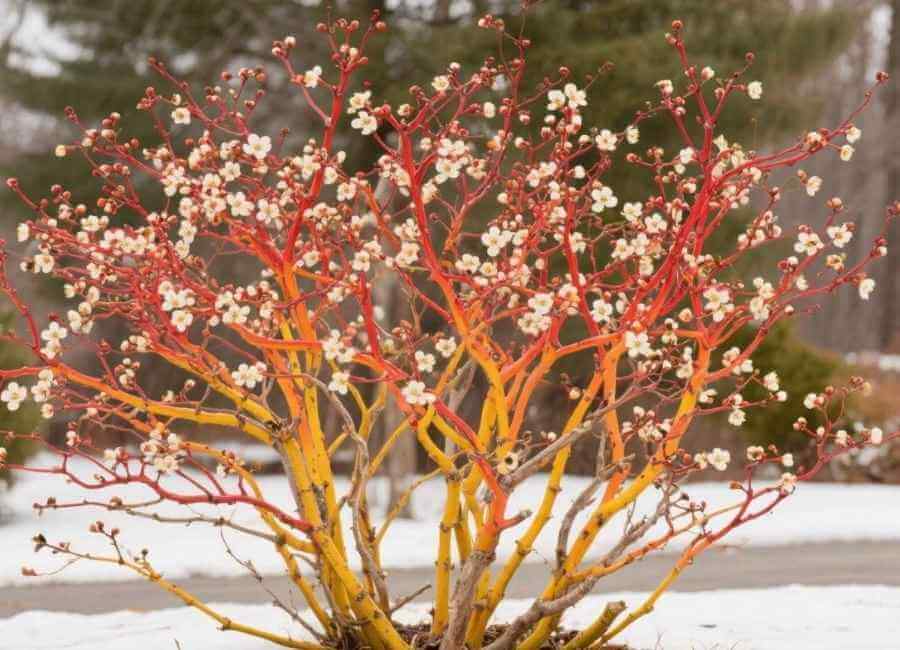
Dogwood shrubs belong to the Cornus genus, which they share with the larger dogwood trees. (Cornus – Wikipedia, n.d.) Unlike the trees, which are famous for their springtime flowers, these shrubs are often celebrated for their striking winter appearance. Varieties like the Tartarian or red osier dogwood feature brilliant red, yellow, or orange stems, providing a pop of color in a dormant garden. (Arctic Fire® Yellow – Red-Osier Dogwood – Cornus stolonifera, n.d.)
These thorny shrubs typically reach 3 to 15 feet in height and width, making them well-suited for most yards. (Cornelian Cherry Dogwood, n.d.) Many North American species also support local pollinators and wildlife, making them a smart pick for eco-friendly gardens.
Where to Plant a Dogwood Shrub
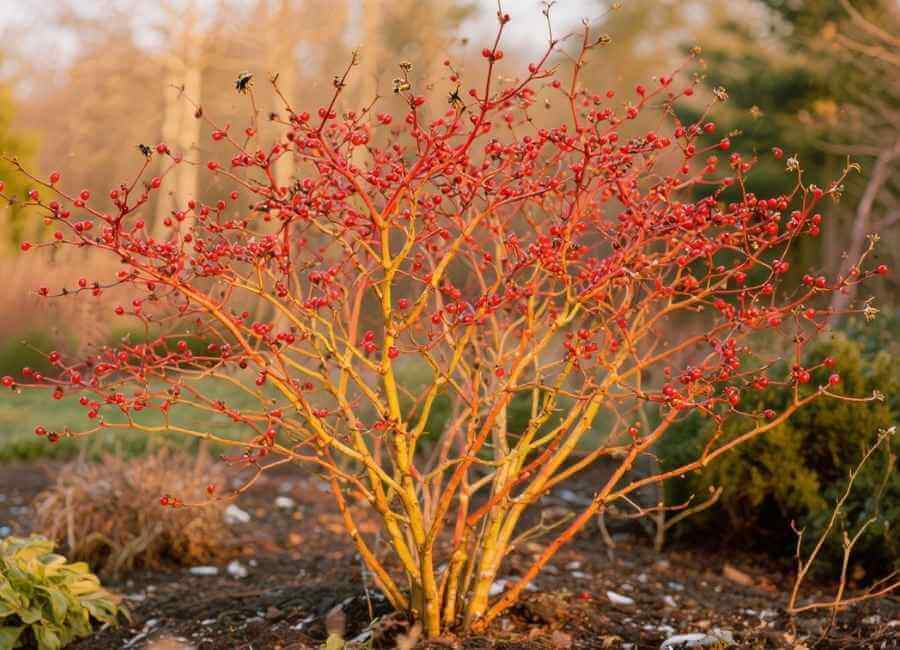
Highly adaptable and thrive. Dogwood shrubs are highly adaptable and thrive in USDA Hardiness Zones 2 to 8. (Fire-resistant plant profiles: Shrubs, n.d.) For the best colour, plant them where they’ll get at least four to five hours of direct sunlight each day.
One of the standout features of many dogwood varieties is their tolerance for wet conditions. If you have a low-lying area, a rain garden, or a spot with consistently moist soil, a dogwood shrub could be the perfect solution. Red osier and silky dogwoods, in particular, are well-suited for these boggy environments. (Cornus sericea (American Dogwood, Creek Dogwood, Red-osier Dogwood, Redstem Dogwood, Red-Twig Dogwood, Redtwig Dogwood, Silky Dogwood, Western Dogwood) | North Carolina Extension Gardener Plant Toolbox, n.d.) They also work beautifully as part of a shrub border or planted beneath the canopy of larger deciduous trees.
How to Plant Your Dogwood Shrub
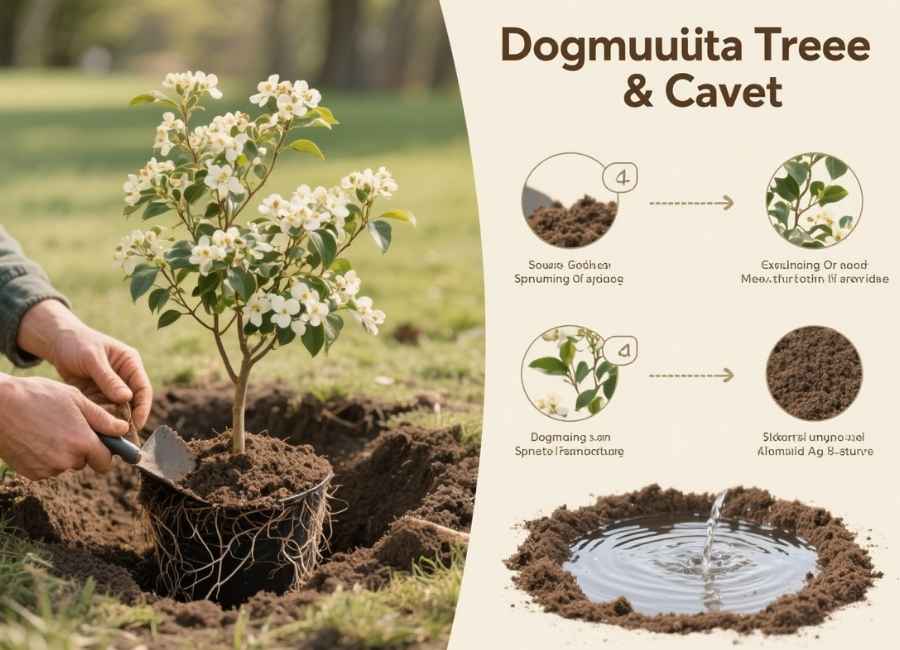
Plant dogwood shrubs in spring or early summer. (Stunning Dogwood Tree: Expert Guide to Planting & Care, n.d.) This timing helps the roots grow strong before winter.
- Prepare the Planting Hole: Dig a hole that is about the same depth as the shrub’s container but at least twice as wide. This gives the roots plenty of room to spread out.
- Take the dogwood out of its pot and gently loosen the roots with your fingers, especially if they’re tangled.
- Of the hole, ensuring the top of the root ball is level with the surrounding ground.
- Remove the excess soil, pressing it down gently to eliminate air pockets. Fill the hole with the soil you removed, pressing it down gently to eliminate air pockets. Water the shrub well right after planting.
- Create a Water Basin: A helpful trick is to build a small mound of soil in a circle around the base of the plant. This “catch basin” helps direct water to the root zone and prevents runoff.
Dogwood Shrub Care Guide
After they’re established, dogwood shrubs don’t need much care. These easy tips will help your plant stay healthy.
Light
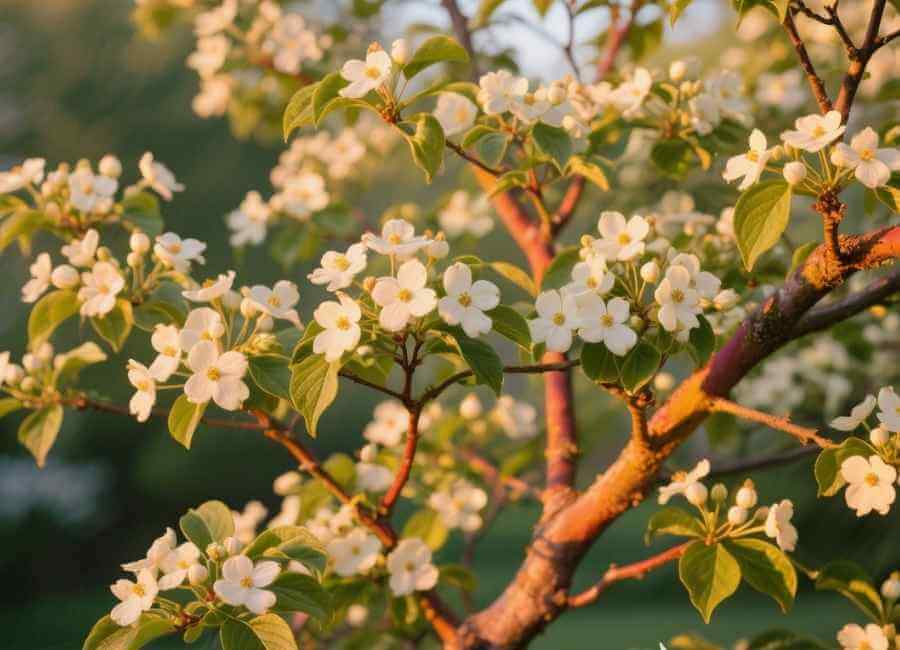
For the most brilliant stem colours and abundant flowers, ensure your dogwood shrub receives at least four to five hours of direct sunlight daily. In hotter climates, a spot with morning sun and afternoon shade is ideal to protect the plant from intense heat.
Soil and Water
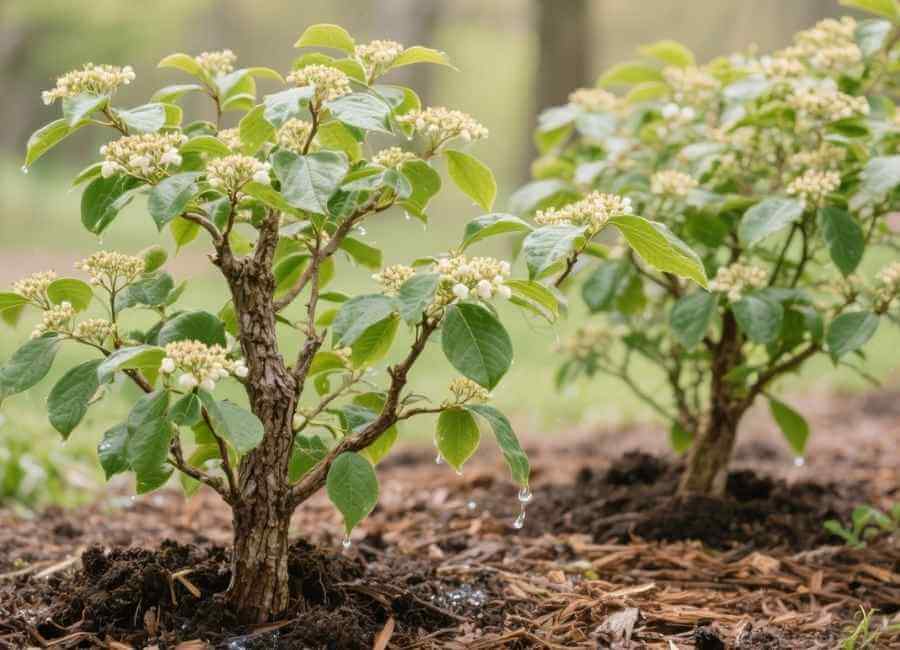
Dogwood shrubs prefer moist, well-drained soil with a slightly acidic pH. (Cornus ‘Dogwood’ – How Experts Grow This Plant For Year-Round Colour, n.d.) Amending the soil with compost at planting time can improve its structure and fertility.
Water is especially important during the first year of life. Give your plant at least one inch of water each week to help the roots grow strong. (Selection and Care of Dogwoods, n.d.) Apply a two-inch layer of mulch over the roots to retain moisture and prevent weeds. (Mulch in the Garden, n.d.)
Temperature and Humidity
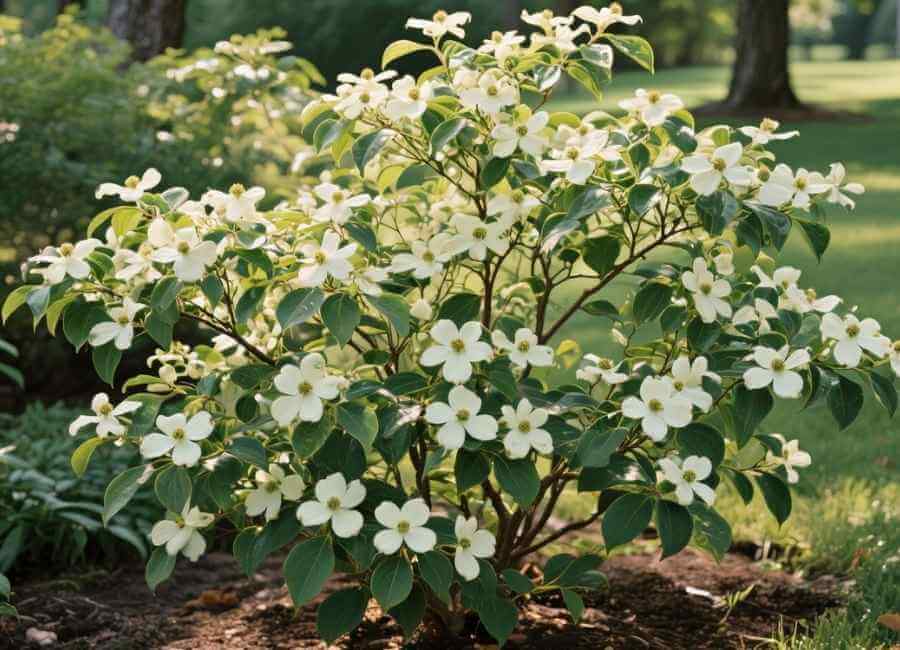
Dogwood shrubs can handle many temperatures, but they might have trouble in very hot, humid places. (Dogwood Trees – Types, Care Guide, Identification, and Uses, n.d.) Giving them afternoon shade can help in these areas.
Fertilizer
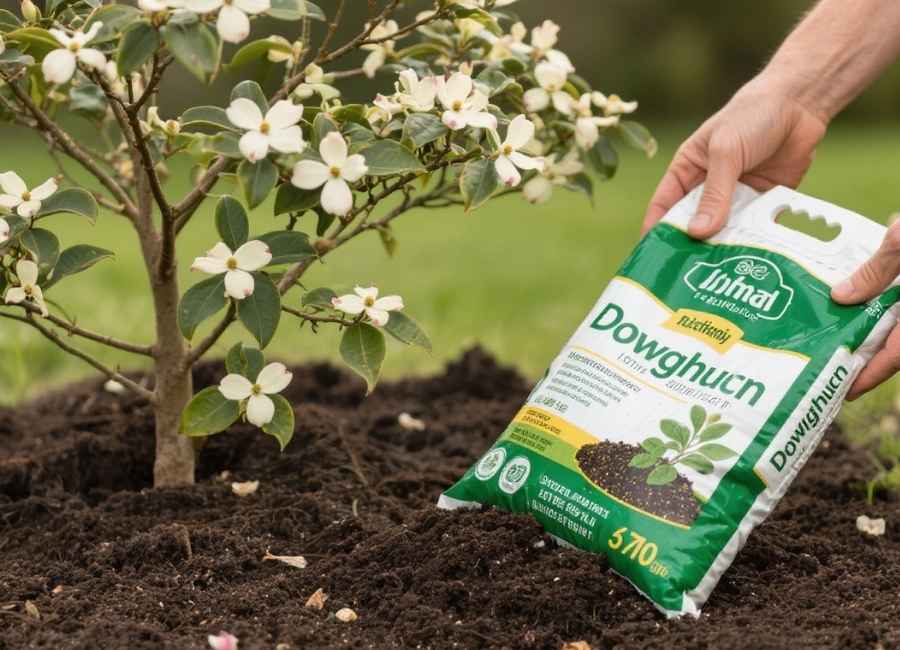
Please, fertilising dogwood shrubs is generally not necessary, especially if they are planted in rich soil. However, if you wish to give your plant a boost, you can apply a balanced, slow-release fertiliser in the early spring. Please follow the product instructions for application rates.
Pruning
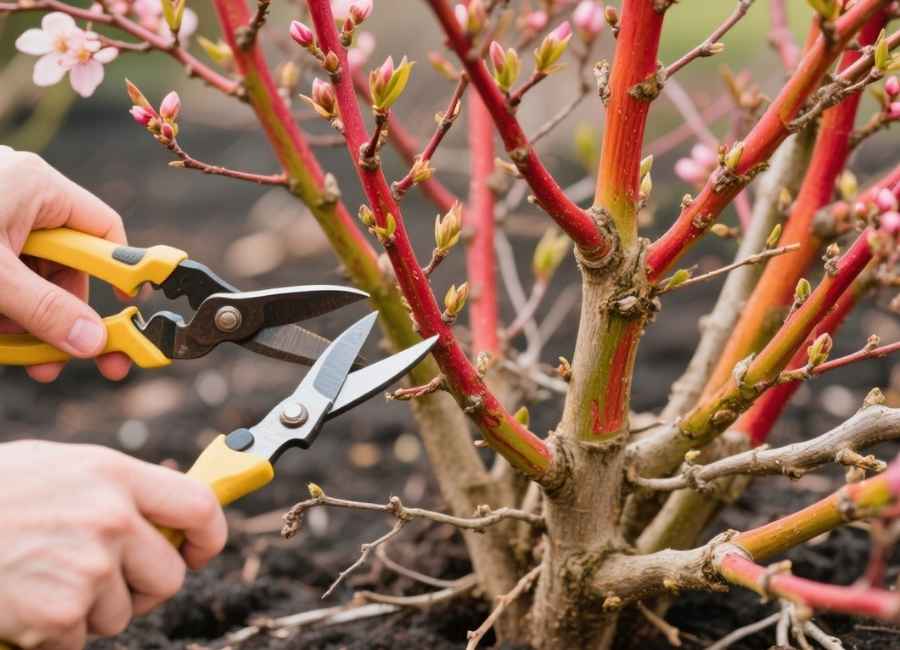
Regular pruning is the secret to maintaining the vibrant stem color that makes dogwood shrubs so popular. The brightest colors appear on new growth, so removing older, faded stems encourages the plant to produce fresh, colorful ones. (Keep Dogwoods Thriving with Expert Spring Pruning, 2025)
In late winter or early spring, before new growth starts, cut about one-third of the oldest stems down to the ground. This renewal pruning refreshes the shrub over a period of three years. (Pruning Flowering Shrubs, n.d.) Also, could you remove any dead, damaged, or crossing branches to maintain the plant’s health and shape?
Common Pests and Problems
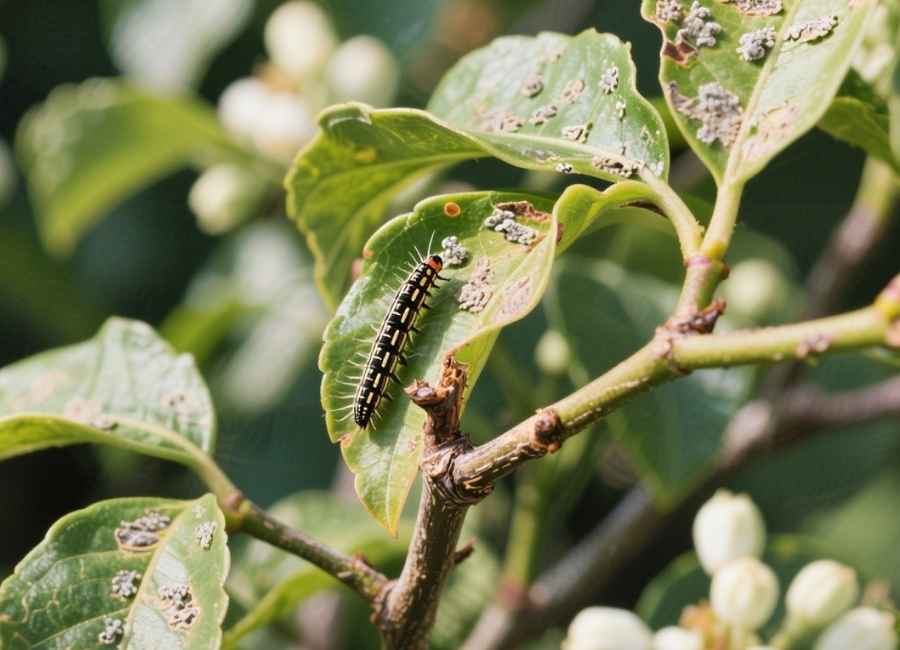
Dogwood shrubs are usually tough, but sometimes they can have problems with pests or diseases.
- Fungal diseases like leaf blight and canker can show up now and then. If you see signs of infection, cut off the affected branches and throw them away to stop the disease from spreading.
- Pests: Sawfly larvae may chew on the leaves, while scale insects and bagworms can also be present. (Costello & Bill, 2009) These pests rarely cause significant damage, but they can be managed with insecticidal soap if the infestation becomes severe.
How to Propagate Dogwood Shrubs
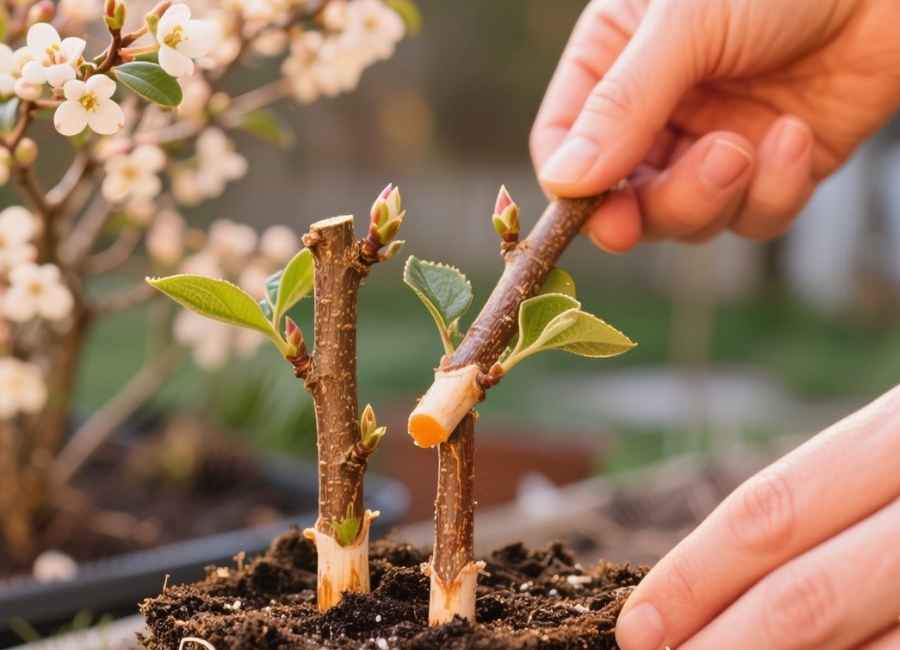
A fun part of gardening is making new plants from the ones you already have, and dogwood shrubs are easy to grow from cuttings.
- Take 12-inch cuttings from one-year-old wood in early spring before the buds open.
- Remove the leaves from the bottom half of each cutting.
- Dip the moistened end into a rooting hormone.
- Plant the cutting in a pot filled with a sterile medium, such as sand or perlite, that is deep enough to cover at least two sets of buds.
- Keep the medium moist and cover the pot with a plastic bag to create a humid environment.
- After about eight weeks, the cutting should have roots. Take off the plastic bag and let it grow a bit more before planting it in your garden.
A Lasting Addition to Your Garden
Dogwood shrubs are an excellent choice for any gardener because they look good in every season and are easy to care for. With pretty spring flowers, lush summer leaves, bright fall colours, and colourful winter stems, they add beauty all year. Follow these simple steps, and you’ll enjoy your dogwood shrub for many years.







